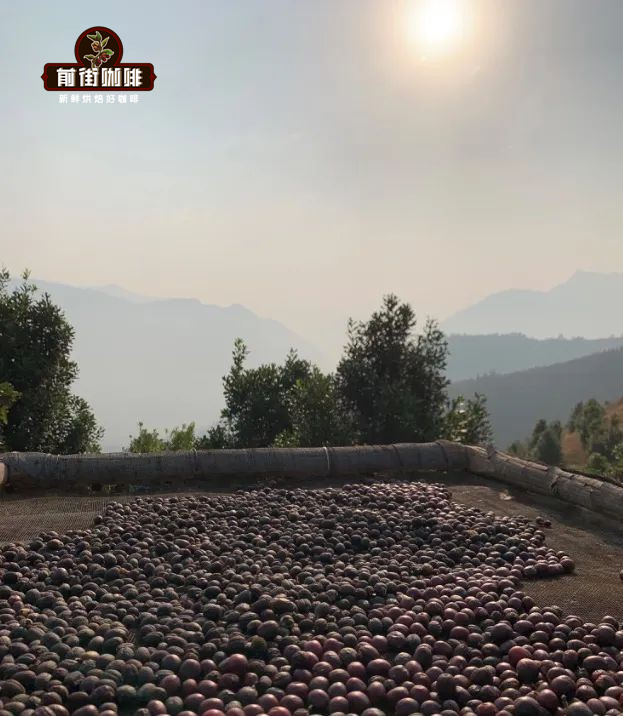Are there any countries where the volcanic area coffee is in the coffee belt?
Coffee producing areas are mainly concentrated in the 25 degrees south and north latitudes, that is, tropical and subtropical areas known as coffee belts, where the average annual rainfall reaches 1500 to 2, 000 millimeters and the average temperature is about 20 degrees, which is a suitable environment for growing coffee trees. The rainfall in the area is heavy and dense, and coffee trees will get enough water to make ends meet.
This area is also a very warm area, so it also meets the temperature demand. However, coffee production has declined slightly because the coffee belt is affected by climate change. Continued global warming has led to a rise in the temperature of the coffee belt, hindering coffee production. Arabica coffee is suffering from these changes before a suitable subspecies or hybrid is discovered or developed.
If you want to know which countries are in this coffee belt, just look at the map and pay attention to the northern half of Central and South America. Most of Africa and most of Asia, at least India, Sri Lanka, Java Islands, the Philippines, Vietnam and other southern countries. This area is where coffee has been grown since it was first discovered in Ethiopia, where farmers have become very skilled in taking care of coffee plants.
Coffee does need a high altitude, at least 1200 m (0.74 miles), but not too high, because low temperatures and frosts can damage plants. Coffee Belt has another advantage. Although it is not obvious, it is the source of all delicious coffee.

Maintain the long-term growth of coffee in volcanic areas
The coffee belt happens to be on top of some active and inactive volcanoes. This means that the soil at the foot of the mountain is dense and fertile, so it can provide a variety of nutrients for coffee plants.
Coffee is also lucky to grow there because this plant consumes nutrients in the soil faster than other plants. In the interior of our earth, there are different percentages of nutrients that all living things need. In most cases, water in the form of underground streams carries these nutrients to the surface.
But in terms of usefulness, the top layer of soil (the soil used for crops) has a certain lifespan. In a few years (depending on what you grow), you will have to dig and renew the soil.
This is called farming, so you can bring more nutrients to the actual surface of the plant. Volcanic soil has more nutrients at first because it is "less used", in part, because it is brought out of the core of the earth.
So, yes, in many cases, you drink volcano coffee. Don't panic, it won't do any harm, because the farm is much lower than the volcano itself. It is the soil and volcanic ash that make coffee so rich in these parts. The nearest area of volcanic activity is also the area with a stronger aroma of coffee beans.
How geography and climate change your coffee taste
If there are dozens of types of coffee beans, and know that they need some type of soil and climate to grow. But how are these things reflected in your coffee? Some features exist only in certain parts of our planet, and here are some.
For example, Ethiopian Yechuefi Coffee is a very fruity and wine-like coffee, as is most African coffee. No wonder Arabica coffee, which originated here, is a rather pleasant and mild coffee.
You may find the smell of citrus or blueberry, or just the smell of flowers, depending on where the coffee comes from in Africa.
American coffee (central and southern) has more berry flavor, is easier to drink, and seems to have a good aftertaste. This is what most Americans know as coffee because it was originally exported to the United States.
Important Notice :
前街咖啡 FrontStreet Coffee has moved to new addredd:
FrontStreet Coffee Address: 315,Donghua East Road,GuangZhou
Tel:020 38364473
- Prev

The 16 most interesting facts about coffee is Beethoven an avid coffee lover?
Some people can't start a day without a cup of freshly brewed coffee. They like coffee very much and sometimes they call themselves coffee addicts. We know this very well. However, drinking one or more cups of coffee a day is not necessarily a bad habit. On the contrary, scientists say, it has been proved to be healthy. Drinking coffee every morning gives you more than just an energy boost. It has also been proved
- Next

The reason why Colombian coffee is popular how Colombian coffee is grown and harvested
Colombian coffee, which ships millions of bags of the best coffee beans abroad every year. But why is the world so fond of Colombian coffee? Here, Front Street Coffee explains the perfect coffee-growing climate of Colombian boutique coffee, coupled with world-class Arabica coffee beans. How to create the perfect coffee cup together. Colombian coffee with its flavor and unmistakable temperature
Related
- What brand of black coffee is the most authentic and delicious? what are the characteristics of the flavor of the authentic Rose Summer Black Coffee?
- Introduction to the principle and characteristics of the correct use of mocha pot A detailed course of mocha pot brewing coffee is described in five steps.
- Which is better, decaf or regular coffee? how is decaf made?
- How much is a bag of four cat coffee?
- How about four Cat Coffee or Nestle Coffee? why is it a cheap scam?
- Which is better, Yunnan four Cats Coffee or Nestle Coffee? How about cat coffee? is it a fake scam? why is it so cheap?
- How about Cat Coffee? what grade is a hoax? which instant coffee tastes better, four Cat Coffee, Nestle Coffee or G7 coffee?
- Process flow chart of coffee making-Starbucks coffee making process what coffee tastes good at Starbucks
- The top ten best coffee beans in the world Rose summer coffee or Tanzanian coffee tastes good
- Yunnan four cat coffee is good to drink?_four cat coffee is a big brand? four cat blue mountain coffee is fake?

